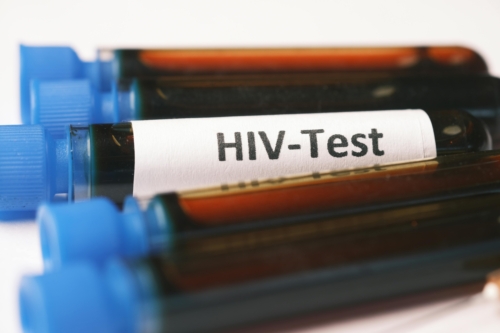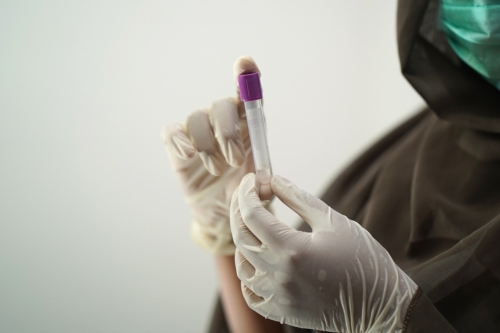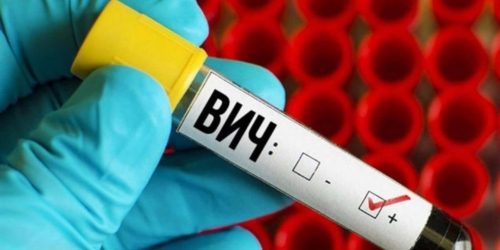In December 2010, the Court of Appeal acquitted the Montreal woman known as D.C. of the charges based on the fact that her viral load was undetectable at the time of single alleged one-off unprotected encounter, and therefore she did not pose “a significant risk of serious harm” to her ex-partner.
Thanks to a colleague in Canada, I now have the (unofficial) English translation of the full text of the judgement, highlights of which are below. The full text can be downloaded here.
[103] The test is twofold: the significance of the risk, and the seriousness of the harm.
[104] At what level is the risk sufficiently “significant” and the harm sufficiently “serious” to characterize a particular conduct as criminal?
[105] In the case of HIV, the seriousness of the harm is undisputed. HIV infection remains a serious one, [translation] “potentially fatal”, according to Dr. Routy, regardless of the brilliant advances made by medicine in recent decades. According to current medical data, HIV infection is irreversible. The drugs developed to fight this disease are efficient, but they come with significant side effects and the challenge of striking a balance between the ability to control the virus and the ability of the patient to tolerate the medication remains.
[106] In Mabior, in paragraph 64, Steel J.A. wrote:
64 Nonetheless, I do not think it can be disputed that being infected with HIV subjects an individual to serious bodily harm. Although no longer necessarily fatal if treated medically, HIV is an infection that cannot be cured at this time and is a lifelong, chronic infection. For those who become infected, it is a life-altering disease, both physically and emotionally. Individuals must take medications every day, and the condition is potentially lethal if they do not have access to treatment or fail to take the medications. Even with treatment, HIV infection can still lead to devastating illnesses. Moreover, the emotional and psychological impact of dealing with such a disease is, no doubt, overwhelming. In their factums, both the accused and the intervener acknowledged that acquiring HIV constitutes serious bodily harm.
[107] I share her opinion.
[108] The significance of the risk is a more difficult question to solve. At which point can one say that the risk is “significant”? 1 in 50,000, 1 in 10.000, 1 in 1000, 1 in 100, 1 in 10? The complete absence of risk is certainly not the test that Cuerrier intended us to apply.
[109] The argument claiming that, in light of the seriousness of the harm associated with HIV, any risk of transmission is “significant” cannot be accepted without distorting the test.
[110] For the failure by HIV-positive individuals to disclose their condition to partners to be sanctioned by criminal law, the risk of transmitting the virus must be significant.
[111] In Mabior, in paragraphs 68 and 69, Steel J.A. wrote:
68 I agree that the nature of the harm can affect the determination of what is considered to be a significant risk. As the magnitude of the harm goes up, the threshold of probability that will be considered significant goes down. However, to have required a complete elimination of risk rather than a significant risk was an error in law.
69 So one must determine what constitutes a “significant risk” of transmission in any particular case. …
[112] I agree. Each case must be assessed by the light of its own circumstances.
[113] Again in Mabior, in paragraph 113, Steel J.A. wrote the following on the subject:
113 Consequently, no comprehensive statement can be made about the impact of low viral loads on the question of risk. Each case will depend on the facts regarding the particular accused, and each case will depend on the state of the medical evidence at the time and the manner in which it is presented in that particular case.
[114] Once again, I agree.
[115] In the present case, according to the evidence on the record, the viral load was undetectable, and remained so for the whole period of time identified in the indictments, that is, June to August of 2000. At the time, the risk of transmitting HIV during unprotected sexual intercourse was 1 in 10,000. Without being zero, the risk was, according to Dr. Klein, [translation] “very weak, very minimal”, or, according to Dr. Routy, [translation] “very, very low”.
[116] Also, we must not lose sight of the fact that in this particular case, unprotected sexual intercourse only occurred once before the complainant was informed of the appellant’s HIV-positive status.
[117] In this context, I believe that the fact that the appellant did not disclose that she was HIV-positive did not expose the complainant to a “significant risk of serious harm” within the meaning of Cuerrier.
[118] The words used by both experts to quantify the risk, that is, [translation] “very weak”, [translation] “very minimal”, and [translation] “very, very low”, are incompatible with the existence of any significant risk whatsoever.
[119] With respect for the trial judge, I believe the Crown did not establish that the complainant’s consent to unprotected sexual intercourse, prior to being informed of the appellant’s HIV-positive status, was vitiated by fraud.
[120] Consequently, there was no sexual assault and, therefore, no aggravated assault.
[121] In Mabior, Steel J.A. concluded her reasons by saying that she understood that for the complainants, any risk of being infected was too much risk, and that they would have wanted to know prior to consenting to sexual intercourse. She adds that this point of view is shared by many, at least from an ethical or moral standpoint, but that, for the time being, this is not the test that the judiciary must apply. As the test was conceived at a time when the fight against HIV was in its infancy, Steel J.A. alluded to the possibility that the Supreme Court might want to revisit the test of “significant risk of serious harm” in order to dispel any inherent uncertainty. I add my voice to hers and note that in light of its numerous social, ethical, and moral ramifications, the initiative of revisiting the entire notion of transmission risks for serious infectious diseases, in the context of Canadian criminal law, should be the responsibility of Parliament.
[122] For these reasons, I would allow the appeal, set aside the judgment under appeal, and acquit the appellant of the two charges brought against her.
This is not the end of the story, however.
The Crown has sought leave to appeal and the case is likely to be heard in the Supreme Court later this year or early next year.
Along with the much more complex Mabior case, who was also partially acquitted on appeal due to his using a condom or due to his undetectable viral load when not using a condom and which is also headed for the Supreme Court, these two cases will revisit the 1998 Cuerrier decision and may establish new tests for “significant risk of serious harm” as it relates to non-disclosure of HIV status prior to sex.
1 year sentence for HIV-positive woman guilty of assault
Sentence to be served in community because of woman’s health, court says
CBC
Wednesday, July 9, 2008
A Quebec woman living with AIDS has been given a one-year sentence, to be served in the community, for hiding her HIV status from her former boyfriend.
Quebec Judge Marc Bison handed down the sentence on Tuesday, after the woman was found guilty of aggravated assault against her ex-boyfriend for failing to tell him she was HIV-positive when the two started courting.
The woman acted irresponsibly and committed a serious crime by depriving her ex-lover of the right to decide whether he wanted to have sex with her despite her status, Bison said at the Longueuil courthouse.
Anyone with a condition as serious as HIV has a legal duty to inform his or her partner, because the virus is not like a common cold, he said.
The sentence would normally be served in prison, but because of her fragile health, she will serve it in the community, the judge said. The woman is in a treatment centre waiting for experimental drugs.
A publication ban in the case prevents the man and woman from being named, but they can be identified by their initials.
When the couple first started dating in 2000, D.C testified she initially withheld her HIV status from J.L.P., but after three months told him she was infected, the court was told.
J.L.P. decided to stay in the relationship. D.C. testified in court they used condoms from the beginning of the relationship, but the court determined the couple had unprotected sex at least one time.
HIV complaint made after assault charge laid
The couple broke up five years later, after the man was charged with assault following the woman’s complaints of domestic abuse.
While his case was pending, J.L.P. alerted police about D.C.’s failure to disclose her HIV status, and she was charged with aggravated assault. J.L.P. was never infected with the virus.
This winter, the Quebec court found J.L.P. guilty of assaulting D.C. and her 18-year old son, but was eventually given an absolute discharge with no criminal record.
The Quebec Coalition of AIDS organizations was disappointed by the case’s outcome.
The onus was on J.L.P. to protect himself and practise safe sex, said spokesman Ken Monteith.
The situation would have been different if D.C. had repeatedly had unprotected sex with J.L.P. without telling him, he said.
D.C. has been HIV positive since 1991. She contracted the human immunodeficiency virus from her ex-husband.





Editorial comment
The Montreal woman who was found guilty of HIV exposure in May, has been sentenced to a year to be served in the community. The woman, who was only prosecuted in revenge for reporting her (now ex) partner to the police for being violent against her and her 18 year-old son, was so ill that the judge could not imprison her.
I have already commented on this tragic case in my previous posting, but what I will say here is that judging from the comments on the CBC’s website, where the story was reported, I am very worried about the state of public opinion in Canada.
Although a few people pointed out the real issue – that she was victimised by Canada’s criminal justice system for having a law that allows disgruntled exes to make a complaint about a ‘crime’ that they had no problem with until their feelings changed towards to their ex-partner – many said the law was anti-male because many men, including Canadian football player Trevis Smith – have been jailed for much longer for ‘similar crimes’.
Others have gone further, calling her a potential murderer, or for the names of “these carriers of HIV” to be made public “for the good of the society”, highlighting the fact that the criminalisation of HIV exposure and transmission, and media reports about the trials, serve as lightning-rods for public opinion about people living with HIV. In the minds of so many Canadians, the woman from Montreal – and ‘people like her’ – are responsible for the HIV epidemic in their country.
The truth couldn’t be further from this myth. An incredibly important and robust study from Quebec published last year found most HIV transmission comes from the undiagnosed; half of it during the first six months of infection. It is undiagnosed people with HIV, rather than those who are diagnosed, who are primarily exposing and transmitting HIV to their sexual partners.
Not only is it undiagnosed HIV that is perpetuating the HIV epidemic; diagnosed people on successful treatment are now considered to be sexually non-infectious by some experts, and the policy of treating people to prevent transmission is now a reality in British Columbia.
How can one arm of policy – Canada’s criminal justice system – be so far behind the thinking of another arm? Getting people tested and on treatment is the most effective way of mitigating the epidemic. Laws criminalising individuals may create a moral tone, or exact revenge in a victim/perpertrator paradigm sort of way, but it does nothing to mitigate the HIV epidemic, and may actually make things a lot worse.
And although these trials create the illusion that HIV-positive people are primarily vectors of transmission, and the media reports of the trials can be innacurate and stigmatising, the rise of Web 2.0, with its interactive comments (even those which are moderated, such as the CBC’s), adds insult to injury.
On the other hand, perhaps reading these comments is the best way of gauging public opinion. even though the judge in the forthcoming Johnson Aziga murder trial doesn’t think that ordinary Canadians have “fears, assumptions and prejudices about HIV, which may feed into [their] judgments and assumptions about [people] accused [of HIV exposure and transmission] and [their] ability to assess the evidence in a calm rational fashion.”
I can’t help but wonder whether the dozen or so prosecutions in Canada this year have adversely influenced public opinion and that the judge is wrong.